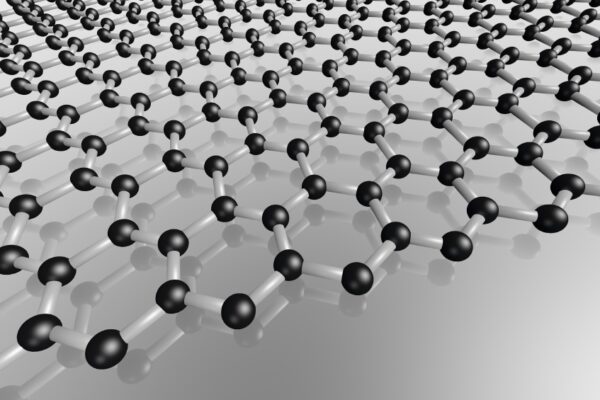
What will a phone look like in ten years?
Some might say we have already witnessed the fastest rate of change in mobile devices, but arguably the best is yet to come. While today’s smartphones boast highly responsive touch displays, high definition cameras and facial recognition, there is still plenty of room for further improvement.
Control
With conversational interfaces such as Google Assistant and Amazon’s Alexa, spoken instruction is changing the way people use mobiles. However, have you ever seen someone in public say ‘hey Google’ to their phone? Me neither. Perhaps there is a cultural block that renders this socially unacceptable.
Perhaps, the next step is mind control. Yes, seriously. Facebook Building 8 division is already developing technology that enables people to type with their minds at a speed of 100 words per minute. This is roughly five times faster compared to typing on a touch display. Without using touch or voice, this kind of technology could allow the user to simply think what it wants the phone to do, whether it is opening an app, playing a video or sending a message.
With this idea in mind, (pun intended) the future smartphone model could look vastly different. Rather than a physical block device, wearable devices and vision overlays could outcompete this norm. Whether these devices are futuristic glasses, contact lenses or headsets, augmented reality (AR) technology would allow users to control all functions with their eyes and mind.
Brain-computer interfaces could even remove all need for a physical device. Researchers at Graphene Flagship Partner ICN2, Spain, are developing graphene brain-computer interfaces, that can be used in brain implants. This technology can record and stimulate brain signals on the surface of the brain, providing a potential application for mobile.
Power
Battery life is one area of mobile that seems to have taken a backwards step, as function-packed phones require more power. The days of charging a Nokia 3310 on a weekly basis are long gone, with phones today working harder than ever before. With continuous use, the average phone lasts 9 hours 48 minutes, and takes around two hours to fully charge.
What if you could charge a battery in five minutes? Graphene Flagship partners Thales and M-SOLV, together with researchers from IIT, Italy, are currently in the process of making this a reality, taking full advantage of one unique material — graphene. The highly conductive properties of graphene have enabled the companies to develop high power graphene supercapacitors. These are to be used in the aeronautical and space sector, providing the industries with energy storage devices that charge and discharge at high speed. As these devices charge much faster than conventional batteries, this development may also benefit the mobile industry, enabling smartphones to become fully charged in just minutes.
In the future, phones could also be charged over-the-air. This is a step up from wireless charging pads, with a company called Energous developing this technology. If a phone is within three feet of the transmitter, it will start charging automatically. As this technology improves, and charging distances inevitably get bigger, phones may be kept constantly charged without the need for worry or wires.
Phone case technology is also complementing these efforts. The NanoCase for the latest iPhones contains a graphene panel that dissipates excess heat inside the phone quickly. The developers claim this extends the battery life by up to 20 per cent.
Some manufacturing using these heat dissipating properties in phones as part of its super cooling systems. This keeps the phone cool, even while being pushed to usage limits.
Vision
Imagine being in a supermarket, holding up your camera, and inferring which fruit is the freshest. Or, in a more extreme example, the camera could be used for driving in dangerously dense fog by providing augmented outlines of surrounding vehicles on the windscreen. This idea is well on its way to becoming a reality.
A new spectroscopy device is opening the door for regular people to use technology that was once only available in laboratories. Developed by Graphene Flagship Partner ICFO, Spain, this device is built into a smart phone camera, which enables it to see more than the human eye. The device could be used to identify everything from counterfeit drugs to harmful substances, all within seconds.
The spectrometer is enabled by graphene, a recurring material in several mobile research projects. These Graphene Flagship’s development is the world’s smallest single pixel spectrometer and is set to take the mobile industry by storm.
5G mobile networks
We can’t mention future phones without mentioning future mobile networks. 5G is the fifth generation of mobile networks. It follows previous mobile generations 2G, 3G and 4G. Compared to today’s networks, which primarily use 4G and 3G technology, 5G is set to be far faster and more reliable, with greater capacity and lower response times.
To enable these high speeds, graphene shows unique potential to exceed bandwidth demands of future telecommunications. Graphene enables ultra-wide bandwidth communications coupled with low power consumption to radically change the way data is transmitted across the optical communications systems.
While we reminisce about the days of predictive text and old-school mobile devices, development in the mobile arena is far from stagnant. Mobile devices — or maybe even brain devices — are set to continue to change.
About the author:
Sophie Charpentier is Business Developer for Electronics the Graphene Flagship – https://graphene-flagship.eu
Related articles:
Wearable technology seeks new materials to enhance functionalities
Graphene startup opens Cambridge R&D facility
New graphene-based recipes spur startups
400x boost for graphene in solar cells
 If you enjoyed this article, you will like the following ones: don't miss them by subscribing to :
eeNews on Google News
If you enjoyed this article, you will like the following ones: don't miss them by subscribing to :
eeNews on Google News



